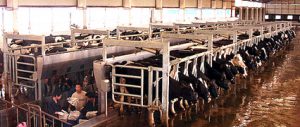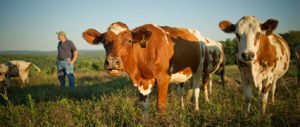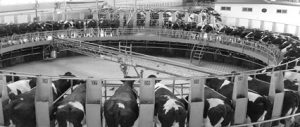The melamine milk scandal of 2008, when babies across China were poisoned by tainted milk-powder, triggered huge changes in China’s food-safety systems. The most obvious was the establishment of the high-level State Council Food Safety Commission, which is chaired by vice-premier Li Keqiang and includes representatives from 15 different ministries and commissions. This was China’s highest-level response to food safety problems yet.
Another change, which drew less attention, was the formation of the Food Safety Risk Assessment Commission and the Food Safety Standards Examination Commission in the second half of 2009. The latter, in particular, was intended to clean up and rebuild China’s food safety standards – a move regarded as fundamental to creating a new era food safety.
A new standard for raw milk was part of the first batch of regulations produced by this process, but amid the controversy engendered, the effort being made to bring order to chaos was overlooked.
Before the Food Safety Law was passed, China was the only nation in the world to have more than one set of food-safety standards. Under the Food Hygiene Law, the Ministry of Health was in charge of food hygiene standards. Under the Product Quality Law, the State Quality Administration was in charge of product quality standards. And under the Agricultural Products Quality and Safety Law, the Ministry of Agriculture was in charge of the safety and quality of agricultural products. These are all mandatory state standards, but there were clear conflicts between them, which caused understandable distress among businesses.
Over the last 30 years, China’s food standards have become outdated, and the revision process has been slow. There have only been three major new promulgations or updates. Prior to the current clean-up, one quarter of existing regulations had been in force for a decade or more – some hadn’t been revised for 20 years. This is despite the fact that, according to regulations on implementing China’s standards, they should be re-examined every five years.
The controversy that erupted over new raw milk standards in 2010 almost obscured these positive developments. The standards clean-up was thrown into disarray just as it got started.
The controversy was sparked by standards for protein content and bacterial counts in raw milk. Acceptable levels for both these measures decreased in comparison with the former standard: from 2.95% to 2.8% for protein content, and from 500,000 per millilitre to 2 million per millilitre for bacterial counts – the laxest standards ever. In Denmark, New Zealand and almost all big milk-consuming nations, protein content must be over 3%, while bacterial counts per millilitre must be under 100,000 in the European Union and United States; and under 30,000 in Denmark. The Chinese media called the standard “a 25-year step backwards”.
In June 2010, Southern Weekend and Caijing magazine brought the controversy to public attention, and it rumbled on until late 2011. Official explanations failed to calm public concerns.
Public anger was directed at two targets.
First, the laxer standards for protein content and bacterial counts, and the clear gap between these and standards overseas, were seen as an attempt to protect China’s backward and small-scale dairy farmers. But, people asked, why should a laggard industry be allowed to dictate standards?
Second, large companies, most of which had been involved in the melamine scandal, participated in drafting of the standard. The public believed the standard had been set in accordance with business interests.
These concerns got to the heart of the debate over food safety standards – should China’s standards be brought in line with international standards or should the country’s own circumstances be considered? Is compromise acceptable? And how should public and business interests be balanced? The standards will influence the growth of companies and their industries – conflicts of interests are inevitable.
There was no platform for calm debate and the different sides stuck to their extreme positions and attacked each other. Scientific opinions weren’t given a hearing, and the truth was obscured.
As one of the reporters who wrote about the affair, I heard a range of views. As Chen Junshi, a member of the Chinese Academy of Sciences, has said, any standard is the product of compromise. No fewer than 50 meetings were held to discuss the new raw-milk standard, and industry opinions were solicited. I obtained a list of industry opinions, covering industry associations, authorities and businesses themselves. Views were diverse, reflecting different interests.
Those differences are not just due to competition between large and small firms, or between producers of pasteurised and long-life milk. The government’s real obstacle is China’s backward dairy sector, disparate livestock-rearing standards and issues of milk quality. Safety standards are in the public interest, but will also affect the interests of China’s numerous small farmers – and the stability of their livelihoods.
During formulation of the standard, the view that the cause of the melamine scandal was that “the existing standard for milk quality was too high and small farms couldn’t read it – leading them to risk adulterating their milk” was put forward. Figures from the agricultural authorities show that in northern areas such as Inner Mongolia and Heilongjiang many small farmers still can’t ensure protein content of 2.8%, never mind 2.95%. The dairy industry associations in northern provinces are firm in their stance and have even privately worked together. Secretary of Liaoning’s industry association, Lu Gechuan, said that their research found 40% of dairy farmers could not keep protein content at 2.95% or above.
Opponents have two arguments: one, the weak position of small farmers is not due to overly stringent standards, but overly powerful big business. Even if standards are low, things will not improve as long as big businesses continue to act as they do. Second, given normal rational and scaled livestock raising, the standards should be easy to reach. Any failure to do so is caused by poor farming methods, and high standards are needed to force the industry to improve. The Shanghai Dairy Association is representative of this view – Shanghai’s dairy farmers are mostly large and well-run operations on Chongming Island. Shanghai’s sources of milk are as good as those of nations like New Zealand.
As for bringing Chinese standards in line with those of other nations, almost none of over 10 food standards experts interviewed agreed the country should rapidly adopt the standards of the European Union or Japan. Reasons included trade barriers, the need for time in which to make improvements and underlying national interests. But there was a consensus that standards need to be forward-looking.
Another debate centred around the participation of business in the setting of standards. This is not the first time this has happened. Supporters pointed out that businesses know the latest movements and trends, and have a right to be heard on the development of their industry. Opponents called the integrity and public-mindedness of big Chinese firms into question – and with the lessons of the melamine scandal still fresh in people’s minds, how can they be trusted?
All the different views have merits. Whether standards are raised or lowered, whether companies participate or not, the most important thing is for the authorities and the evaluating bodies to have the capability and data needed to make decisions and balance different interests.
But this seems to be the weakest link in the process of sorting out and rebuilding China’s food standards. One veteran expert who has participated in the setting of many standards recalls that when raw milk standards were being determined in the past, the authorities would first collect seasonal data from locations around China for analysis before setting indices.
But on this occasion, as the focus is on tidying up and combining standards and the leading body – the Ministry of Health – does not have jurisdiction over farms, there was not enough collection of baseline data. This means the different interest groups all stuck to their own positions.
With a lack of scientific data, thoroughgoing research or a real understanding of the situation, it was hard to avoid the final decision being determined by a balancing of superficial pros and cons, unable to choose between the people’s lives, safety, consumers, dairy farmers and businesses.
Sorting out China’s food safety standards is onerous and complex work. Differing interests and business participation are not actually the core issues – or at least, they are just a normal. More important is that, when a standard is being revised, the work is supported by real research and reliable data on the industry and its problems. This is an even more enormous task. And it is essential.
China’s food safety standards must of course respect China’s circumstances. But we need to know what those circumstances are.
Zhu Hongjun is editor of Southern Weekend’s environmental pages.
Homepage image by sheilaz413






